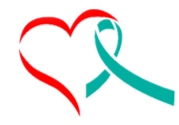If you want to join in out fight, become a volunteer!
If you’re ready to make steps in your healing process, we can help you get started! Call us
at (336) 228-0813
What is it?
Human Trafficking is a modern form of slavery in which an individual performs labor against their will through force, fraud, and coercion.
Forms of labor include:
Sex Trafficking
Forced Labor
Domestic Servitude
For more information about help, visit our help page for trafficked individuals
The three main components of Human trafficking are:
Force - confinement, deprivation, sexual, or physical assault, choking, hitting, burning, and gang rape
Fraud - falsely promising education, travel, and contracts, through psychological manipulation or a fake identity
Coercion - threatening to cause harm to an individual or their loved ones, using fear (real or perceived) or intimidation to continue harm or violence, and threatening exposure or abandonment
Who is affected?
Human Trafficking is the exploitation of vulnerable individuals, such as those that are from stateless, or poverish backgrounds, and other many other factors that contribute to the vulnerability and marginalization of person.
High Risk Victims include:
At-risk youth
Runaway youth
Individuals engaged in street-based prostitution
Individuals with prostitution-related charges
Trafficked individuals are often subjected to life-threatening conditions. Contrary to popular belief, an individual does not have to be transported from one country to another in order to be trafficked. Although females are more likely to be trafficked and exploited for sex, anyone can be subjected to human trafficking.
Human trafficking is illegal and is often unreported because victims are fearful of coming forward because of traffickers and/or law enforcement. Victims may not be physically tied to a trafficker, but the psychological bondages make them unable to leave and force them to remain silent. Language barriers can also make coming forward more difficult.
It is important to note that not all forced labor is considered human trafficking. For example, a person may be transported from one location to another but may be free once they reach the intended destination.
Youth Vulnerabilities
Age
History of Abuse
Drug Use by Parents
Runaway or being kicked out of home
History with Child Protective Services
Older Romantic Partner
Financial Instability
LGBTQ
Alcohol or drug dependency
Signs
Signs vary from person to person, but these indicators may be red flags and should be further explored. If you or someone you know are exhibiting these signs and have had or may be experiencing human trafficking, call 911 and get help immediately.
Leaving activities abruptly
Having tattoos that suggest ownership
Associating with older, negative peers
Associating with or having vast knowledge of prostitution
